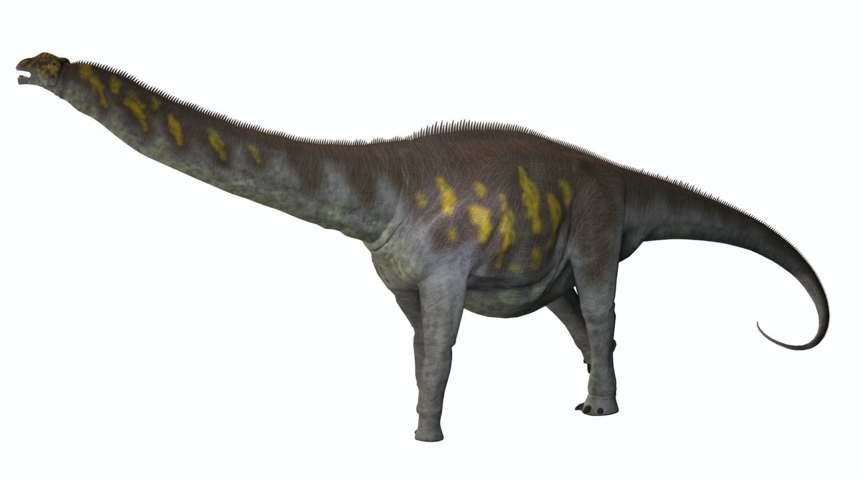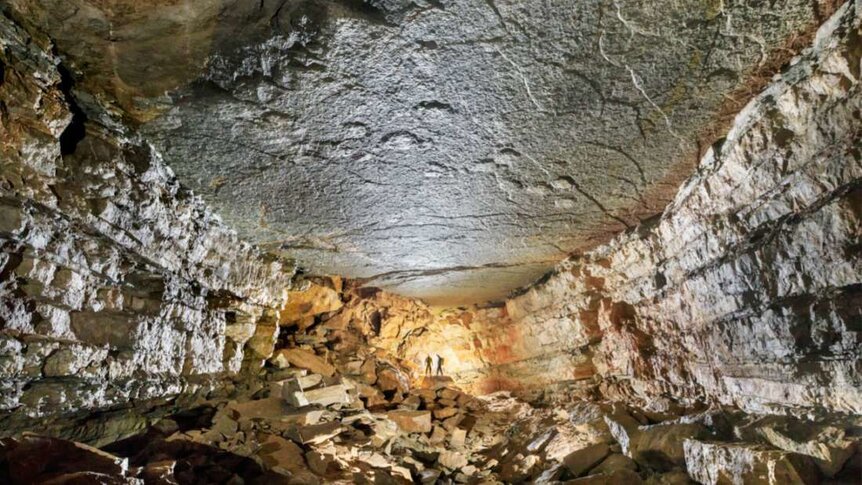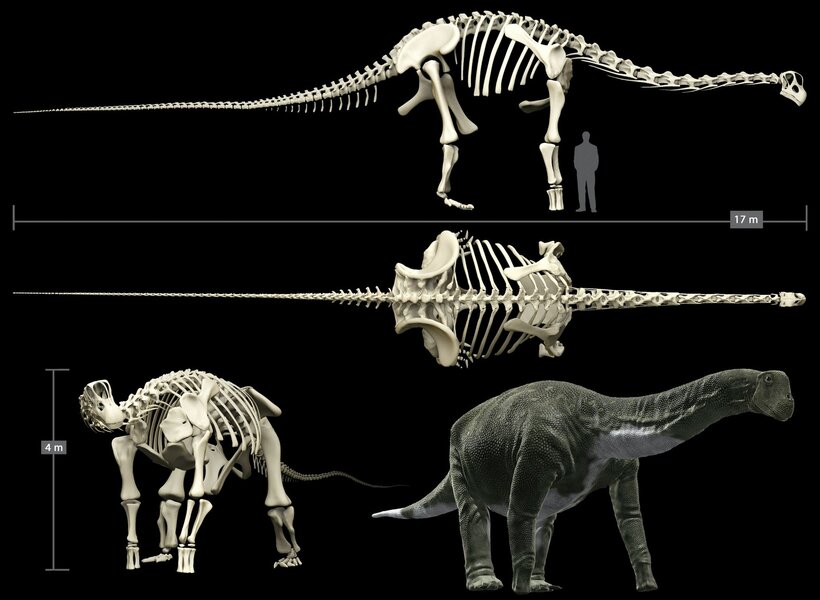Create a free profile to get unlimited access to exclusive videos, sweepstakes, and more!
Upside-down titanosaur tracks give the illusion of dinosaurs walking on cave ceiling

Even in today's topsy-turvy world, it still seems strange to discover multiple sets of prehistoric dinosaur footprints stamped into the stone ceiling of a labyrinthine cave in Southern France, but that's exactly what's been found by Dr. Jean-David Moreau of the University of Burgundy–Franche-Comté.
Looking overhead while trekking into the bowels of the earth on a 2015 caving expedition at the Castelbouc Cave beneath the Causse Méjean plateau, Moreau and his colleagues stared curiously up at three distinct groupings of footprints scattered along the underside of the subterranean roof. Measuring up to four feet long each, these dino imprints were created nearly 168 million years ago by a species of colossal, long-necked herbivores known as titanosaurs.
The results of their foot-stomping discovery were published March 25 in the Journal of Vertebate Paleontology.
"The tracks from Castelbouc attest the presence of sauropods in proximal littoral environments during the Middle Jurassic. This discovery demonstrates the great potential of prospecting in deep karst caves that can occasionally offer larger and better-preserved surfaces than outdoor outcrops," the authors explained in the paper.
Eons ago, this region that's now been altered by geologic forces was once the shoreline of a vast ocean on the surface of the Earth. This trio of primeval titanosaurs were apparently strolling along the seaside paths, leaving evidence of their passing in the muddy sands, which over millions of years became submerged and tilted by planetary pressure to form this rare cavern 1640 feet below ground.
While dinosaur tracks and impressions are not unusual to find inside railway tunnels, rock quarries, and coal mines, these gravity-defying tracks are almost never found in naturally created caverns, especially in a maze of claustrophobic crawlspaces sometimes 300 feet in length, such as this French location.
"When I learned about the dinosaur footprints in this cavity, I was overjoyed," photographer Rémi Flament tells SYFY WIRE. "We recognize several cavities with tridactyl footprints, but not of this family of dinosaurs. It's a first. I went to photograph the site with my caving team, consisting of two carriers for the lighting equipment, Julien Dupont and Gauvin Dumont.
"It was a day in January, and the weather was catastrophic. It was raining a lot," he recalls. "The low point of the cavity was almost drowned. We were able to pass with a certain fear that the water could rise even higher. It was not the case. We took the photos in a few hours. The ceiling of the cavity is very high, and the room very large. I had to use a lot of electronic flashes to light it. It is a very beautiful moment in my career as an underground photographer and I hope that these photos will allow to create new vocations."





























